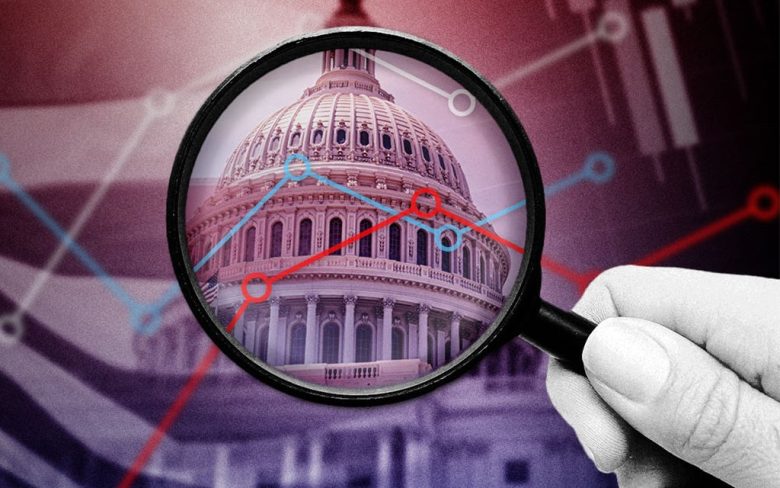It’s a far cry from the mood back in 2021, when growth crawled at around two percent neither thrilling nor alarming. The feared collapse in profits never truly came, and new players kept joining the field. The list of insurers now runs not only from Allianz to Zurich, but increasingly from Amazon to Zhong An. Yet despite all the noise about disruption, that long-awaited revolution in insurance never really showed up.
But calm markets can be deceptive. Something deeper is changing behind that stable surface.
The Silence Before the Shift
Despite the insurance industry’s apparent stability, there is a small but widening divide between those at the top and those at the bottom.
Examining the data closely reveals that digital-first insurers are rapidly gaining ground while others are stagnating. This is evident in premiums, profitability, and cost ratios.
Digital transformation upgrades are now required.
. It is the boundary between continuing to be relevant and gradually disappearing. Consumers who bank, travel, and shop online increasingly anticipate the same degree of convenience and speed from their insurance. Instead of paperwork, language, and weeks of waiting for a claim, they want openness, efficiency, and empathy.
Meanwhile, outsiders from fintech, retail, and technology are confidently entering the market. They comprehend digital design, data, and consumer experience.. And unlike traditional insurers, they’re not weighed down by outdated systems or internal silos.
The calm, it turns out, is over. The real contest has already begun.
Living With Uncertainty in 2025
The year ahead brings no shortage of uncertainty, just new forms of it.
Can insurers survive a long period of low interest rates without completely reinventing their offerings?
How will inflation, global supply disruptions, and changing consumer behavior affect pricing and claims?
And what happens to motor insurance when electric vehicles, smart mobility, and driverless tech start rewriting the rules?
No one has all the answers. But one thing’s certain: waiting for clarity is no longer an option.
Finding the Way Forward
Despite the turbulence, the future isn’t all gloom. In fact, insurers have an opening, maybe the best one in decades to redefine who they are and how they serve people.
Here are five ways the industry can set a stronger, more forward-looking course for the years ahead.
1.From “Customer Focus” to True Customer Centricity

Every insurer talks about putting the customer first. Very few actually do.
Too often, policies are still designed around the company’s internal structure, not the customer’s real-life needs. But when you ask people what matters most, their answers are strikingly consistent: value, convenience, and fairness.
The real shift insurers need is not in marketing language but in mindset. Protection isn’t just paperwork; it’s a promise. It means recognizing life-changing moments early, offering guidance that matters, and settling claims quickly and with empathy.
The winning formula combines tech and touch digital simplicity paired with genuine human reassurance.
Customer centricity isn’t just a talking point anymore. It’s the new foundation for survival.
2.Use Data and Automation Wisely and Humanely
Technology used to mean efficiency. Now it means intelligence.
In the next five years, many insurers are expected to cut operational costs by about a quarter — with leaders saving even more. But the real benefit goes beyond cost-cutting. It’s about timing and accuracy delivering the right product to the right person, through the right channel, at just the right moment.
Think about a life policy that evolves with your health, or car insurance that adjusts automatically as you drive less. That kind of personalization is no longer a fantasy; it’s already starting to emerge.
Insurance is shifting from something you buy to something that quietly adapts to what you suggested, not sold.
3.Redefine Innovation Don’t Just Decorate It
Innovation in insurance has too often meant new packaging around old ideas. That won’t cut it anymore.
Today’s risks are different. Climate change, cyber threats, digital dependency, and new health realities are rewriting what it means to be protected. Products like cyber insurance, EV battery coverage, or pandemic travel protection once niche are now essential.
ESG principles, too, are changing how insurers operate. Sustainability and social responsibility aren’t window dressing anymore they’re essential to long-term stability. The 2021 floods demonstrated that prevention is equally as important as compensation.
In order to assist consumers avoid disasters rather than just recover from them, future solutions will combine insurance, preventive, and support into a single ecosystem.
4.Define Your Role in the Digital Environment

The barriers around the insurance sector are dissolving. Digital health firms, e-commerce sites, and tech behemoths are already vying for market dominance.
In just four years, from 2016 to 2020, the percentage of consumers who would be willing to purchase insurance from a digital provider increased from 7% to 44%.
Conventional insurance providers are no longer able to remain in their markets. They must be included into the digital ecosystems that consumers currently utilize, such as financial dashboards, fitness platforms, and shopping apps.
Insurance need to be perceived more as an imperceptible barrier that materializes when necessary than as a tangible good.
Those who can innovate, work together, and integrate without conflict will rule the future.
5.Consider Work in the Hybridization Era
The pandemic changed how people behaved, not just how they bought things.
Hybrid models have become the new norm, but the transition hasn’t been easy. Many executives admit that getting people back into offices or even redefining what “office” means has been challenging. Nearly half also say they’re struggling to attract digital talent.
In the meantime, ambitious professionals seeking freedom, creativity, and meaning in their job are being drawn to insurtech businesses, which are supported by billions of dollars in capital.
There is an urgent need to transform the ethos of traditional insurers’ offices. Successful people strike a balance between independence and community, liberty and direction, and trust and flexibility.
Being flexible is now seen as a sign of respect rather than just a benefit.
From Modification to Innovation
The narrative around insurance in 2025 is not one of crisis.
It’s about crossing a threshold. The industry stands between its comfortable past and a digital, data-driven, deeply human future.
Those who act boldly investing in analytics, culture, and true customer understanding will define what protection means in the modern world. Those who don’t will quietly fade into the background.
Insurance has always been about shielding people from uncertainty. In this new decade, it must also shield itself from irrelevance.
Because the greatest risk facing insurers today isn’t disruption.
It’s standing still.



